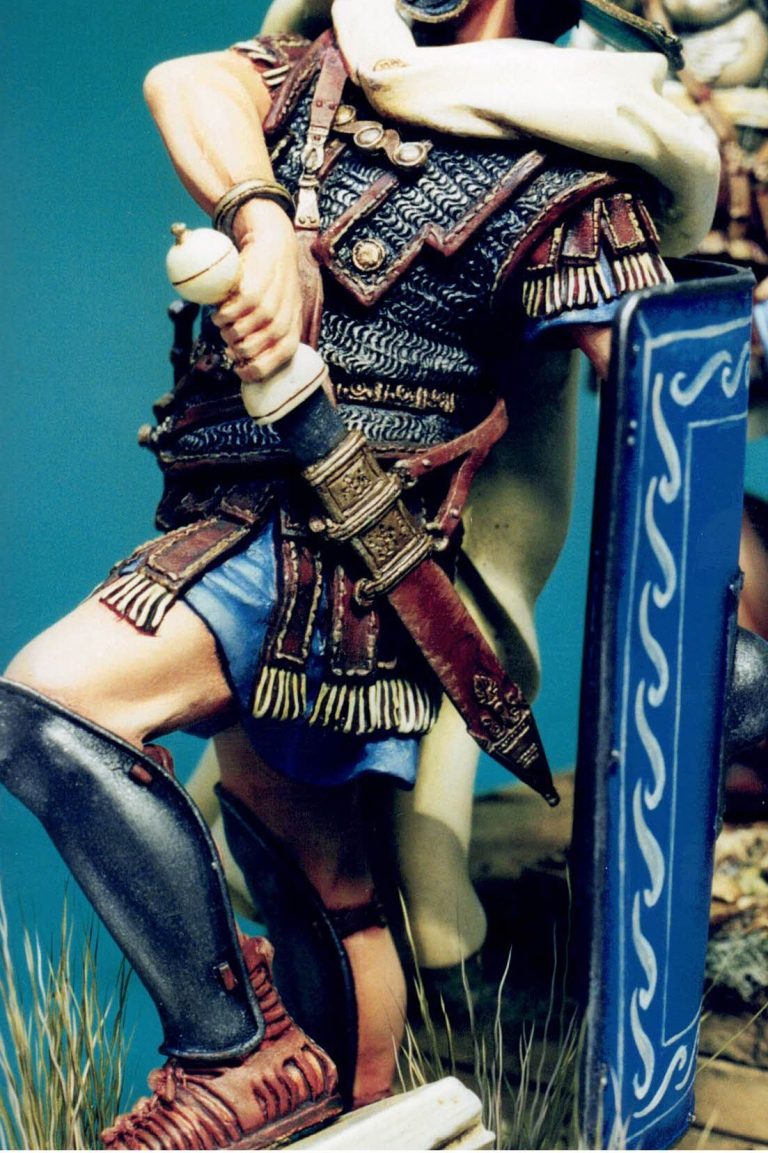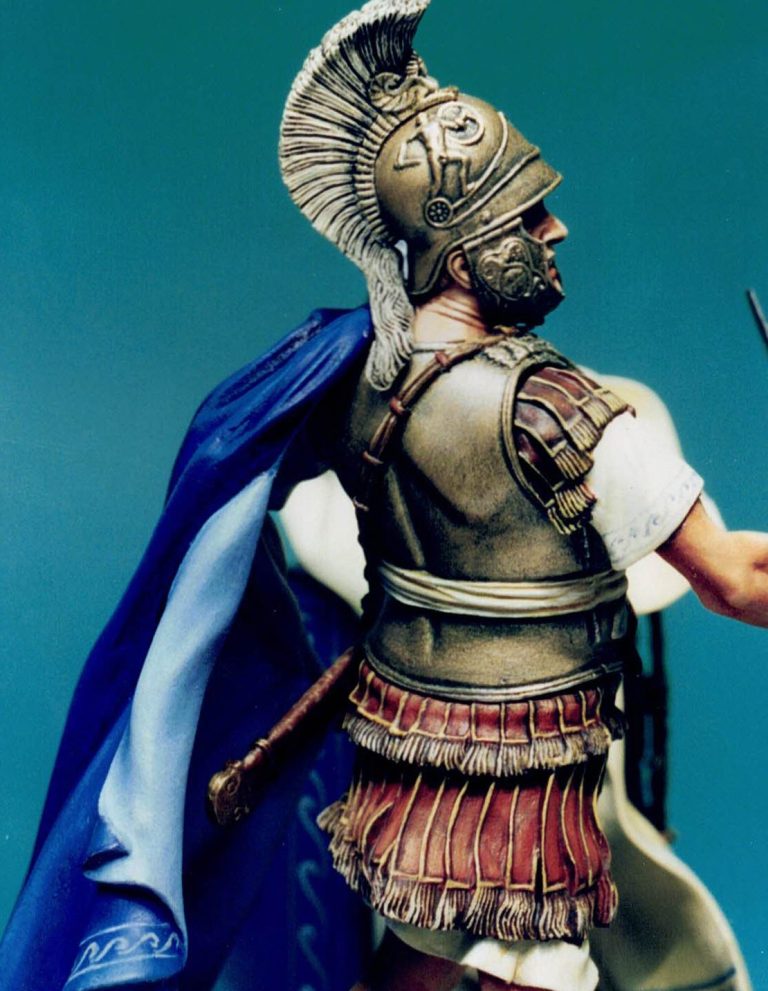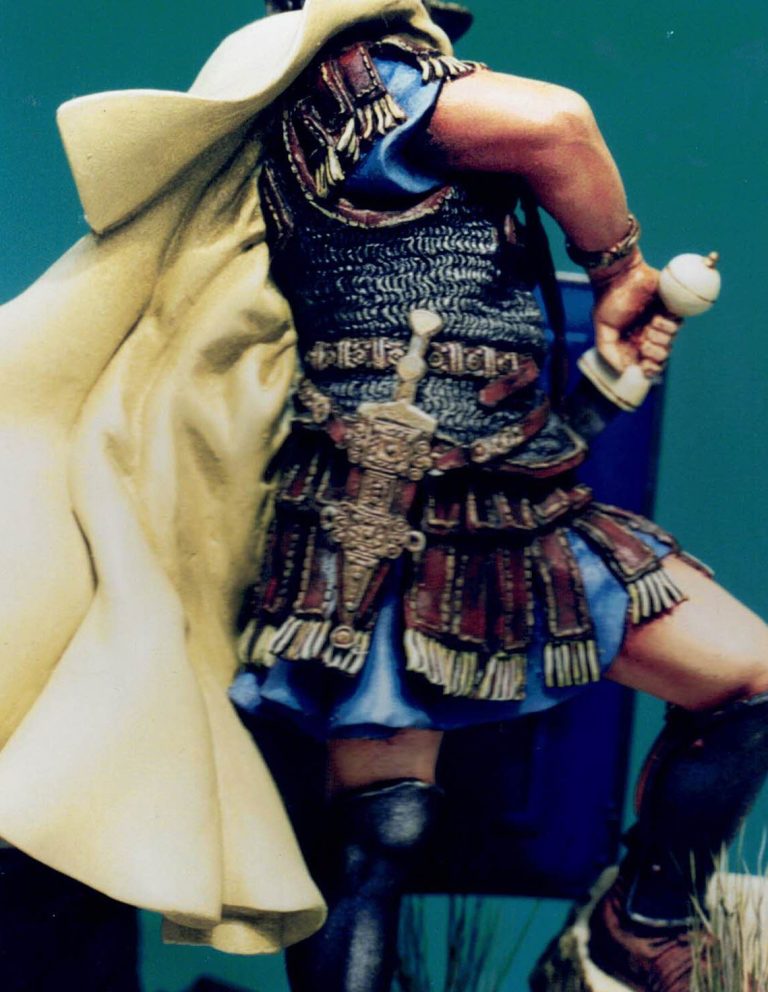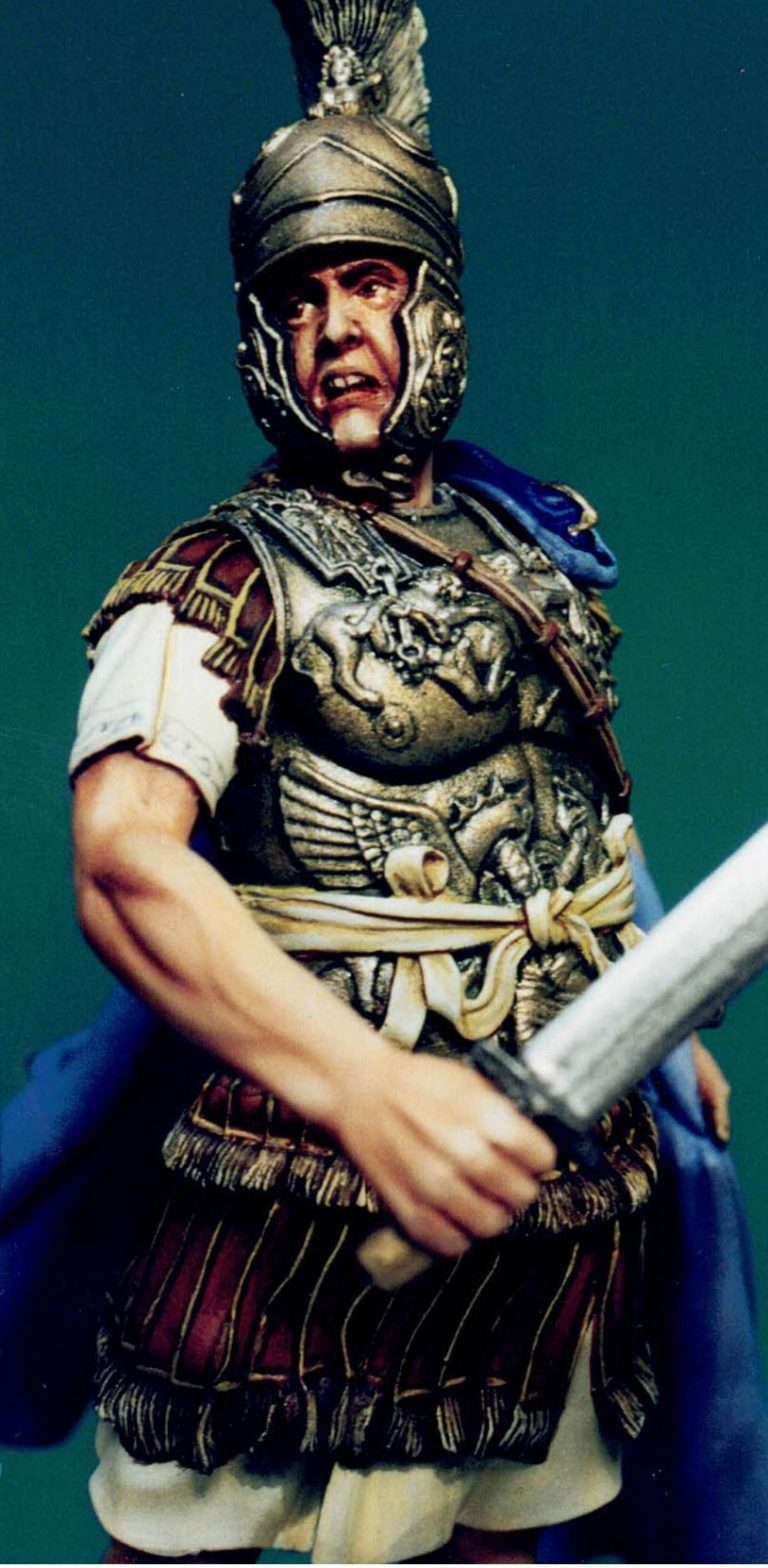

Vespasian's Legions
90mm Pegaso figures
Article in Military Modelling magazine 2009
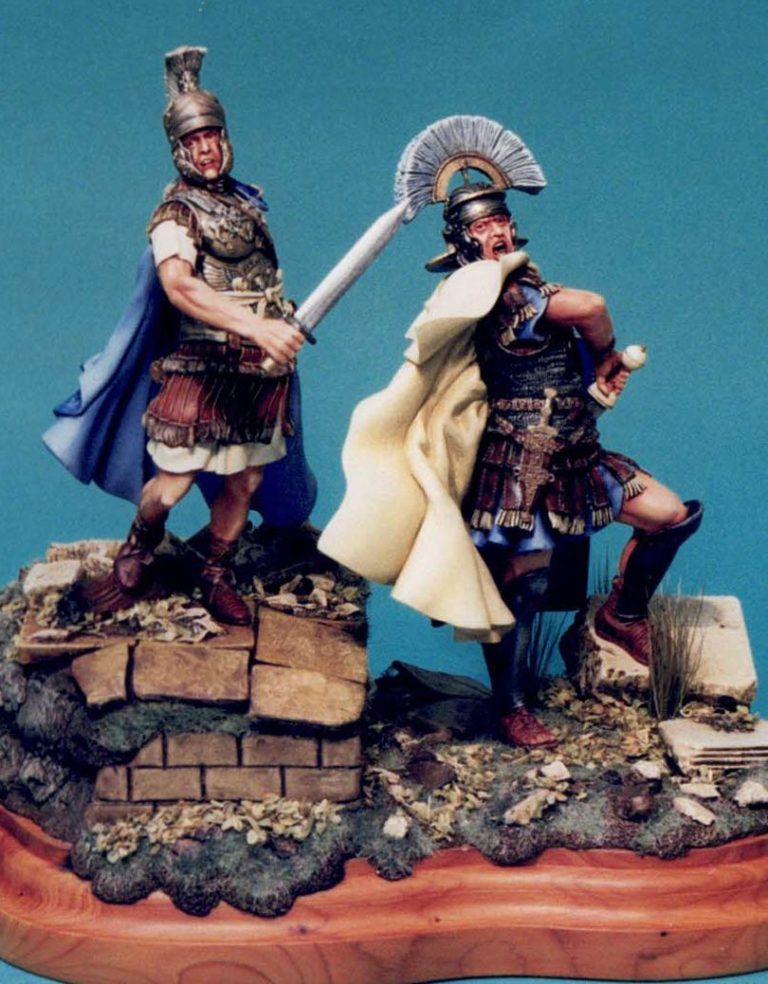
Ah, the joy of finding out you’ve lost files.
Yes, another model project that I seem to have lost the text file for, so I’ll have to do a lot of this from memory.
Vespasian
A Roman commander of the Naval contingent of Rome’s military forces, who made a move to become Emperor in the year that saw Rome in a lot of turmoil, Vespasian becoming the fourth Emperor to sit on the throne within twelve months.
He successfully held onto power, and it was he who began the design and construction of the Coliseum – such a central part of Rome’s architecture even to this day.
Whilst there is a lot of discussion surrounding what colour Roman soldier’s clothing actually was….. Was it red, was it simply undyed linen, or was it some other colour ?
There have been mentions of the Naval Soldiers wearing blue cloaks in contemporary writings, which is why I chose to paint these two figures in such a way.
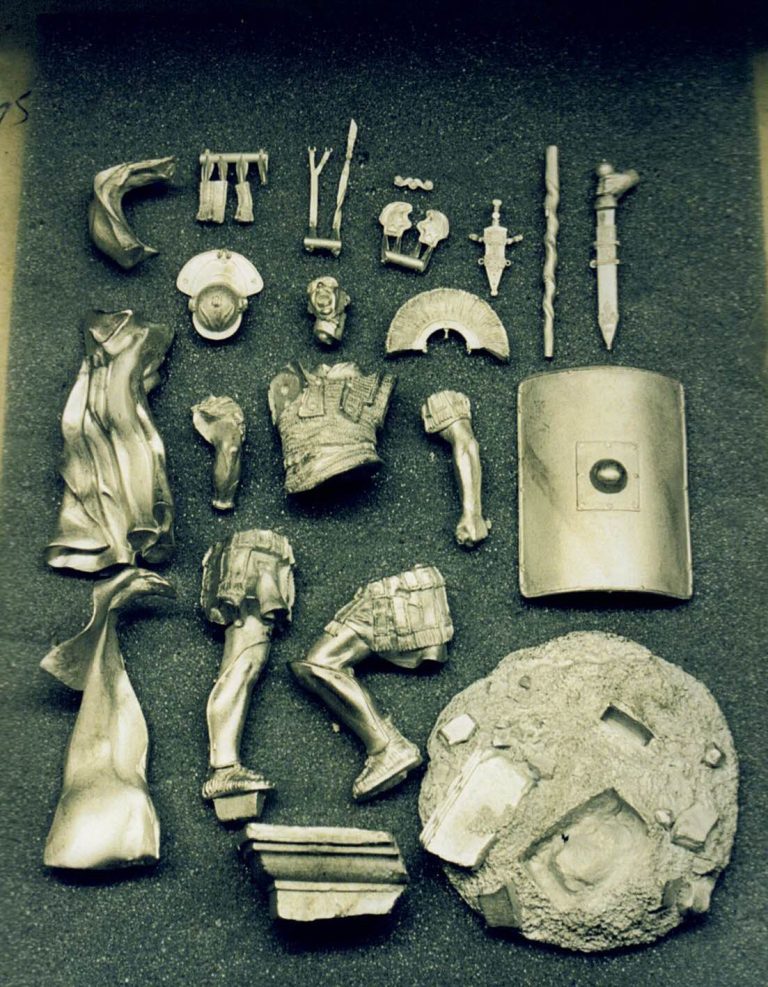
The models
Two offerings in 90mm from Pegaso, but released several years apart.
the commander figure is much older that the soldier, having been released around 1990, although to my mind it is a nicer sculpt, with fine details and a lot more character.
The Legionary is still a good figure, and well animated and produced, but to me isn’t quite as good as the Commander.
Photos #1 and #2 show the parts laid out – yes there’s rather a lot of them for the Legionary, and both kits make up into very solid and quite heavy models.
The second shot shows how I kept the parts separate for painting, mounting them on an assortment of wire and wood holders.
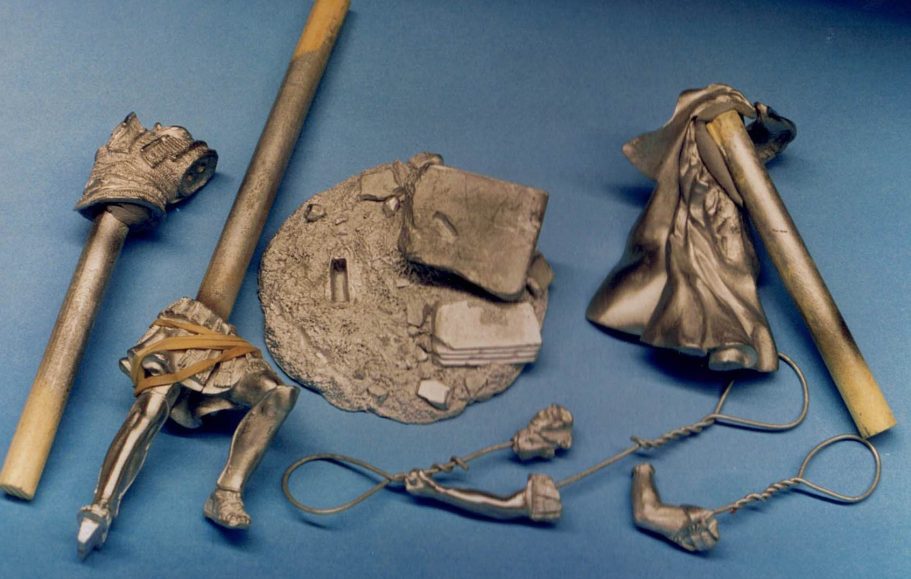
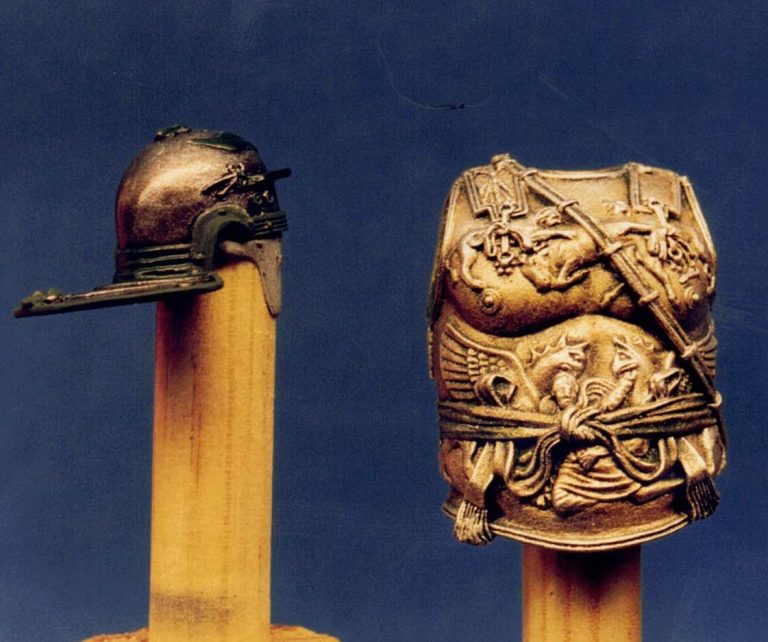
Photo #3 – I painted both models at the same time, beginning with the metallic areas, and this shot shows the torso from the Commander and the helmet of the legionary being painted with gold coloured acrylic paint on the torso and Steel coloured acrylic paint on the helmet with gold used for some of the trim, over which I’ve added Burnt Umber oils, removing the excess paint with a soft cloth.
Photo #4 and the Commander figure has taken quite a leap forward. The flesh areas, including the arms and face have all been painted, although they’re not seen in this shot, and the leather areas painted with various red/brown oils. The waist sash has been undercoated as too has the lower edge of the chiton ( skirt ).
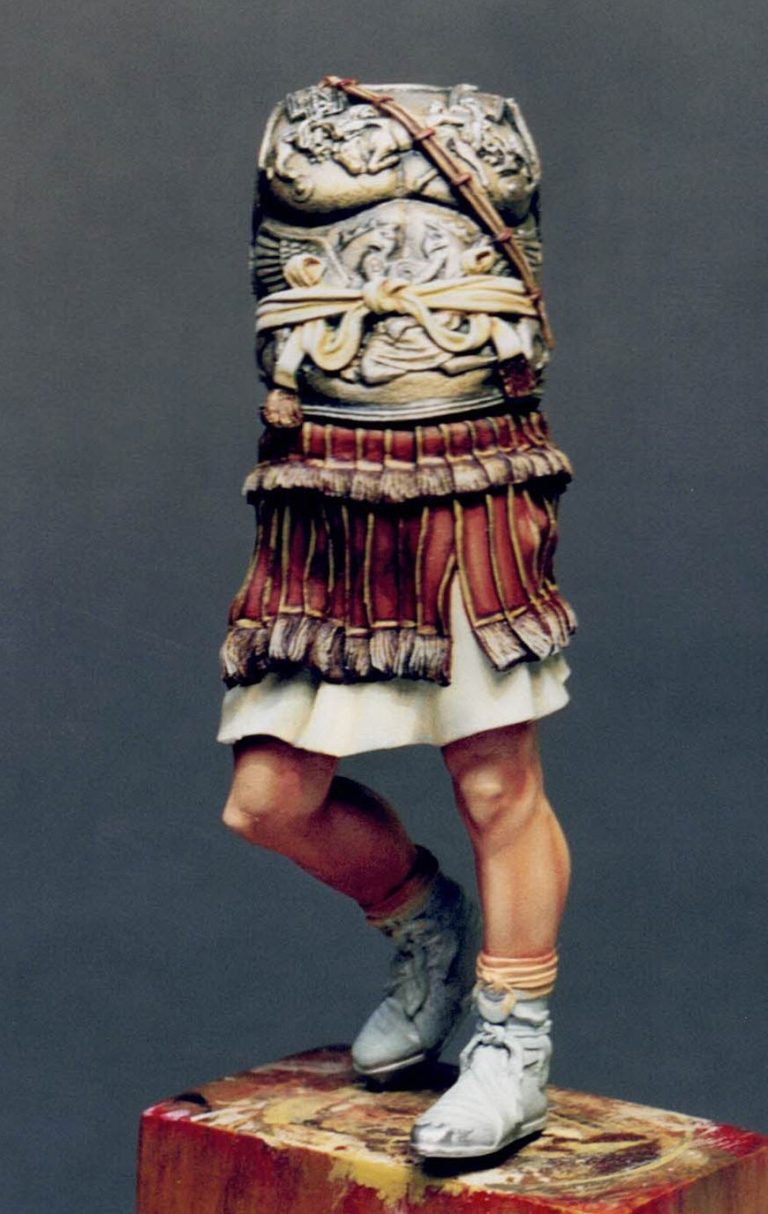
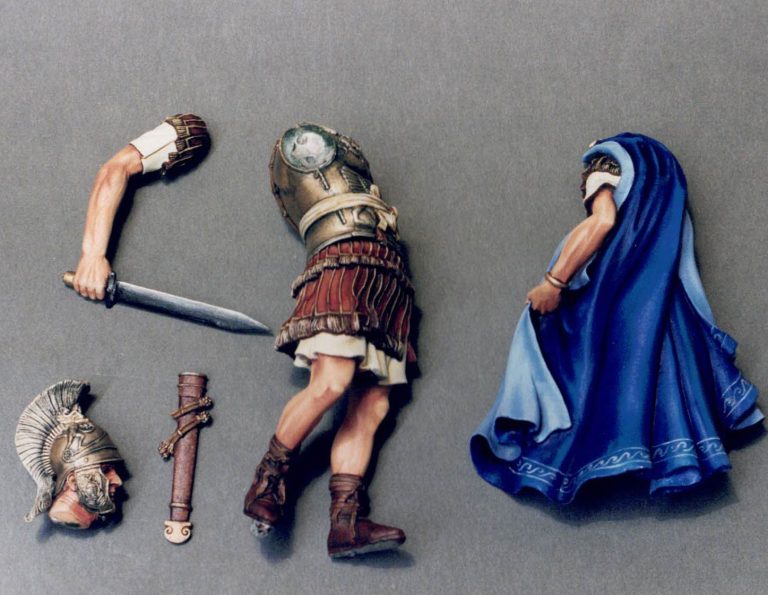
Photo #5 I’d got some really good references at this time which pointed to soldiers clothing being bleached linen, and chose to paint the chiton in pale cream, and just painting the figures cloaks blue.
This shot shows all the parts for thecommander figure prior to any further glue being added. I’d joined the upper torso to the lower torso, but the rest of the parts remained separate for painting.
I find this much easier and it allows me to get to some of the recessed detail a lot better, but does mean that sometimes I have to go back and add either shadows or highlights to areas once everything is joined together if I’ve not got the angles I think that light will fall on the figure quite right.
Note the different “white” or pale colours that have been used on the chiton, the waist sash and the lining to the cloak. All are based on being white, but slight differences in colouration separate the areas from one another.
Photo #6 and whilst oil paints dried I thought about a setting for the two figures.
Here is the back of the base with a block of wood holding up the metal base from the commander figure whilst a wall made from polystyrene has been added in front of the wood block and milliput epoxy putty applied with a texture of stone blocks sculpted into it.
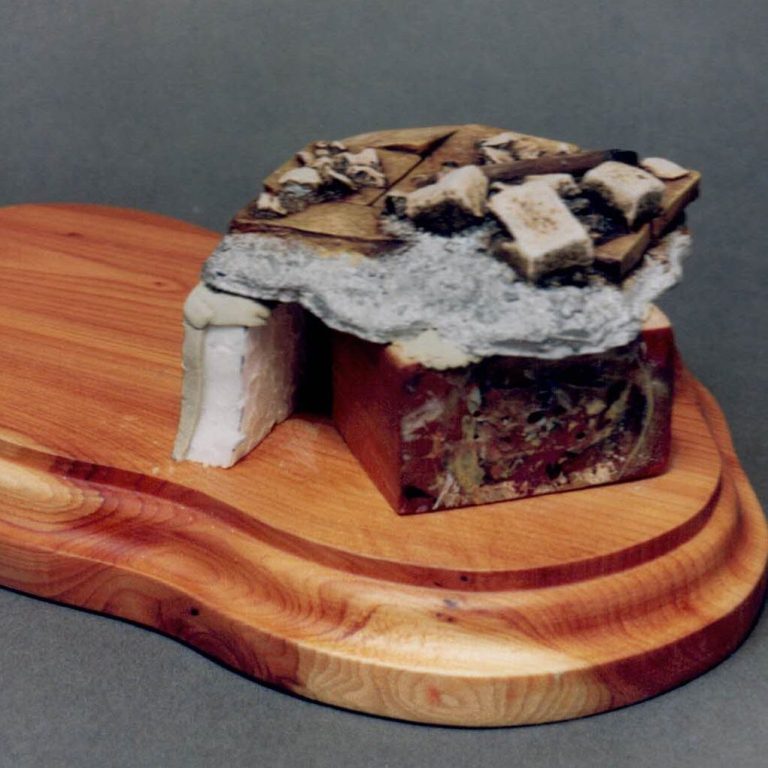

Photo #7 shows the view from the front, and the commander figure will be placed on top of this, elevating him above the legionary, who will be placed on the as yet blank area of the plinth to the right of this shot.
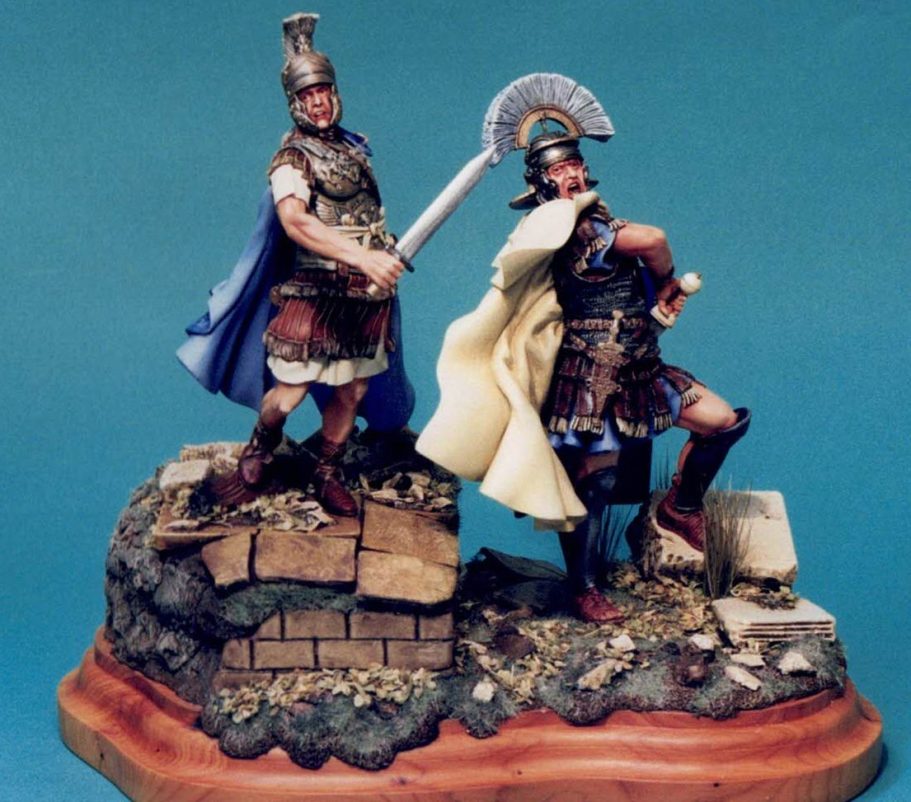
Photo #8 shows the completed scene.
Yes, a lot has gone on here to complete the figures, so I’ll just un through a couple of thoughts and ideas that got me to this point.
I’ve reversed the colouration on the clothing of the legionary to a blue chiton and a bleached linen cloak.
My thinking that the rank and file would be cheaper to clothe this way, only having to dye the smaller article of clothing for each soldier. Note also that his blue has faded and obviously the dye used was of cheaper manufacture.
The worried look on the commander’s face leads the viewer to interpret the scene as one of danger, the enemy has broken through the line and the legionary is moving forward to defend his leader.
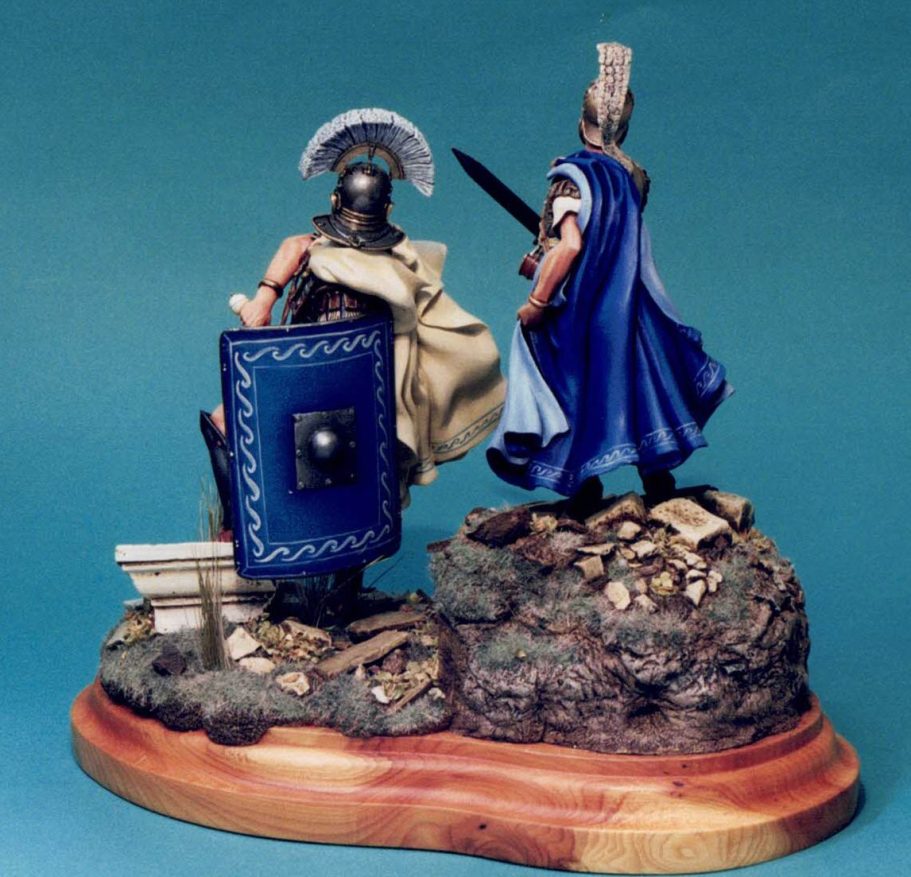
The leader in turn has already marked the danger and whilst the legionary is only drawing his gladius, the commander has anticipated the possibility that he will have to defend himself and already has his sword out and ready.
Looking at the bach of the models, I’ve used a wave-like design on the edge of the commander’s cloak and then continued this in a larger form on the legionary’s shield edge, again making reference to these soldiers being from a naval force.
The groundwork – I’m never quite sure that ancient architecture should always be depicted as in ruins, after all, it must have been newly built at some point, however with three emperors already having occupied the throne, perhaps some buildings did suffer damage in the “change in management” upheavals during this short period of time, so int his case I think the fallen masonry is perhaps believable.
I added some fallen leaves – Birch tree seed-pods – and some longer grass – Deer hair from a fishing shop that sells fly-tying materials.
There’s an amount of milliput under all the static grass and bits of fallen masonry – small pieces of stones that I’ve picked up here and there – the putty being textured with a piece of rock that had quite a lot of detail on it.
Final thoughts.
I like Pegaso kits, although I might have mentioned that before. The quality of the sculpting and casting, the pose and subject matter never seem to disappoint.
The only problem I’ve had with this vignette is the weight of the figures in comparison to the fastening points on the base. Although pinned in place they do seem keen to detach from their groundwork quite willingly and I’ve had to reset them a couple of times after taking them out to display at shows.
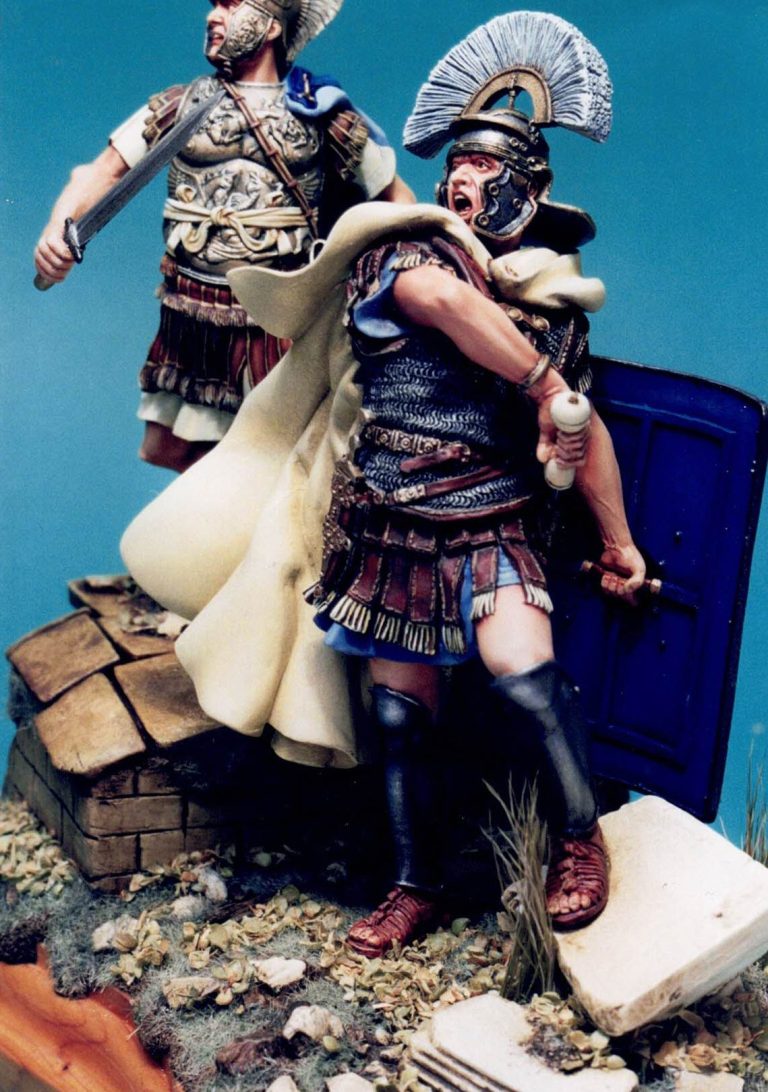
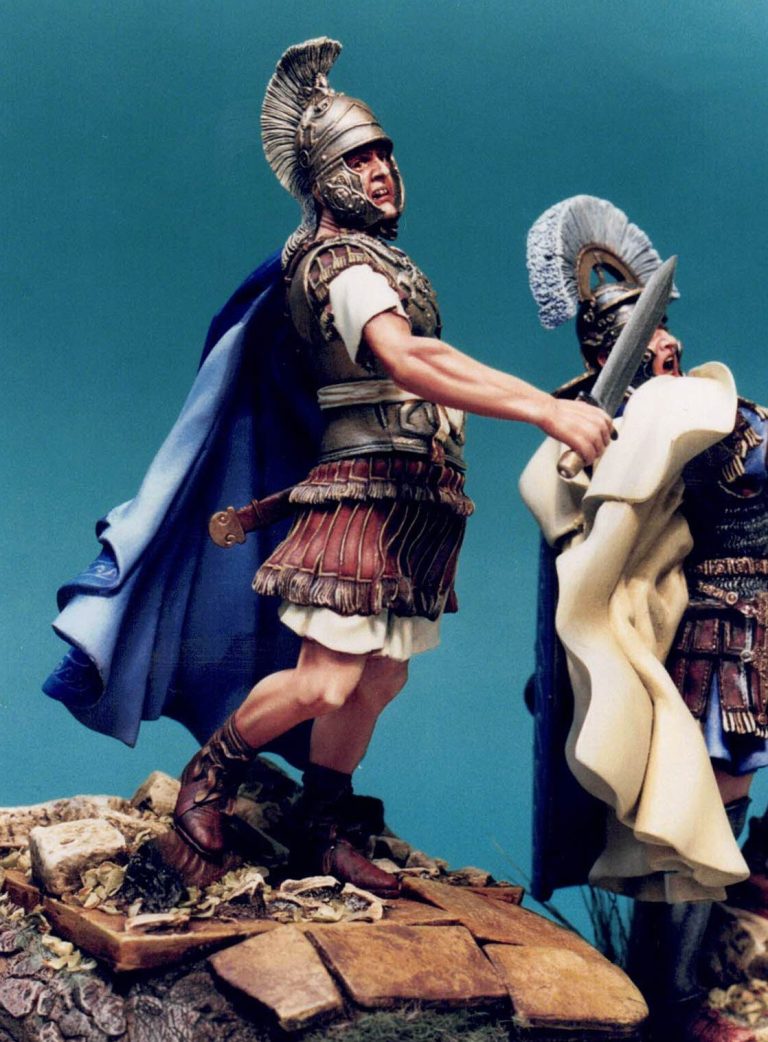
Pegaso’s recent move to casting figures in resin would solve this problem, but to be honest I still like the heft of white metal kits – I grew up with figures being cast that way, although I’m as happy working on a resin figure too.
Both figures are very well detailed, although the commander figure – for me – is the nicer of the two. Not by much I hasten to add, but “just a little bit” more my favourite.
If still available, or even seen second-hand, either of the se figures are well worth picking up, you definitely won’t be disappointed.
